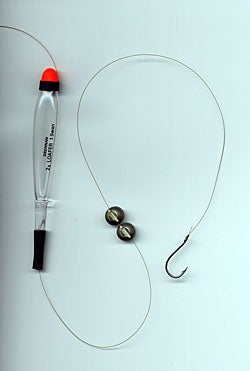| MARK WINTLE |
| Mark Wintle, an angler for thirty-five years, is on a quest to discover and bring to you the magic of fishing. Previously heavily involved with match fishing he now fishes for the sheer fun of it. With an open and enquiring mind, each week Mark will bring to you articles on fishing different rivers, different methods and what makes rivers, and occasionally stillwaters, tick. Add to this a mixed bag of articles on catching big fish, tackle design, angling politics and a few surprises. Are you stuck in a rut fishing the same swim every week? Do you dare to try something different and see a whole new world of angling open up? Yes? Then read Mark Wintle’s regular weekly column. |
PERCH
During the summer, Dave Slater had promised to take me fishing for perch on a local stillwater. I had never visited this water, and really had little idea of what to expect. But during the early part of the season the water was packed with anglers trying their luck with the large head of small carp. It was a question of waiting for the crowds to diminish before arranging a trip. By September, the water was much quieter, and Dave managed a midweek trip bagging two perch of around two and a half pounds plus several of around a pound and a half. He stressed that one particular swim was the hotspot, the one that he had fished, and therefore an early start to be sure of getting that swim was essential. We arranged to fish the water the following Saturday morning. Blue air The swims that Dave thought the perch frequented were those with plenty of lily bed cover. The lake had been artificially constructed with a low earth dam near the car park. From the dam, the lake was an elongated triangle to where a brook fed the lake. Due to the drought, the brook had dried out so that the level of the lake was several inches below normal. Though there was about five feet of water by the dam, the further away from there you go the shallower it gets. Even the swim that Dave had in mind is only two feet deep by the lilies. Extensive lily beds and Norfolk reed beds were found in many swims on both sides of the lake. But there was little actual fishable water in many of the swims that had lilies. It was case of walking round the lake, assessing each swim on its merits, until we found one that we liked. Having failed to find a swim on the right hand bank, we crossed the now dry brook and began to look at swims on the other bank. This side looked more promising.
Tackle The early morning breeze was chilly, with patches of mist drifting across the lake. By a great bed of Norfolk reed, a carp bubbled. But, apart from the odd little roach flipping, nothing else stirred. Our floats gently bobbed on the edge of the lilies yet never showed that agitation that indicates the nearby presence of a perch. Some time after nine it was time to move on. We discounted one or two likely swims with promising cover because the fishing stages had fallen into a rotten mess. Ten minutes later, we were more or less back at the car park. We decided to give the first two swims on the dam a trial. A strike, a miss, then success
A move Although we had had only limited success, and none of real specimen size it had been educational for me. It seems to me that there are two main effective ways of catching perch; with small livebaits, and with lobworms. On any given water, one of these methods is likely to be much better than the other. So on this water Dave has found that livebaits are much better than worms. Worms here produce eels, tench and small carp rather than perch. On the nearby Stour a livebait is much more likely to produce small pike, and worms have proved more effective for the perch. The effectiveness of the method is dependent on the perch’s preference rather than avoiding other species. Other methods I would advocate at least 4lbs line and with the modern lines stick with five or six pound line and rod to match. We used size 6 single hooks, lip-hooking the livebaits. We wouldn’t recommend using smaller than a size 8. Finally, on the day in question, there did seem to be a short feeding spell. Whether it was due to changing light conditions, or just that was when we found the perch I’m not sure, but according to Dave, this was not unusual on this water. Next week: ‘Perch on the Ouse’ |















